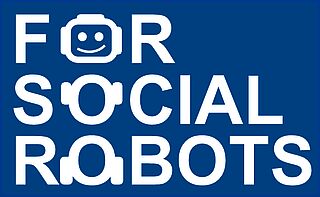FORSocialRobots
Bavarian Research Association FORSocialRobots - Social skills for automated systems and robots

Social Situative Communication
There are many different robots that are used in different environments. These robots differ in their physical structure (humanoid robot with two arms, industrially used robot with a manipulator, etc.) as well as in their social abilities. The goal of this subproject is to adapt the robot's communication to its respective abilities (robotic self) and the current situation. The term "situation" refers to the current state or circumstances in which the robot finds itself. This can be the physical environment, but also an emotional state.
In order for the robot to behave socially in the current situation, an analysis of the situation must first be carried out. This involves camera-based detection of what is present in the environment, such as objects, but also the detection and analysis of people and their emotional state. This is done using contactless detection of emotions and vital parameters. By analyzing this information, the communication needs in this situation are derived. Since robots have different abilities, both social and physical, these abilities, especially the existing communication abilities, are also modeled in this work package. After the communication needs have been derived and the robot's communication abilities have been modeled, the next step is to match up which information the robot's communication should contain and which communication technologies the robot has available to carry out this communication. This information serves as the basis for TP3, in which the exact communication process is derived.
The work in this subproject is carried out based on different use cases: one partner is the hotel "DAS HÜRNER", where previous projects with robots have already been carried out. Another partner is the Ulrichswerkstätten, where the topic should be applied in the cafeteria area. Mey Maschinenbau GmbH is a special machine builder where the field of application will be industrial production.
An example situation could be clearing plates. If a robot only has storage surfaces, it can ask the people in this situation to place the plates on the storage surface. If the robot has 2 arms, it can ask if it should clear the plates and pick them up itself. Some robots have a tablet as a supporting output medium - other robots have arms that can gesture. These abilities are incorporated into the modeling and are considered situation-dependent.



